There are numerous varieties of the succulent Euphorbia polygona, but the most well-known and popular one is known as the Snowflake. This is possibly because of its whitish appearance.
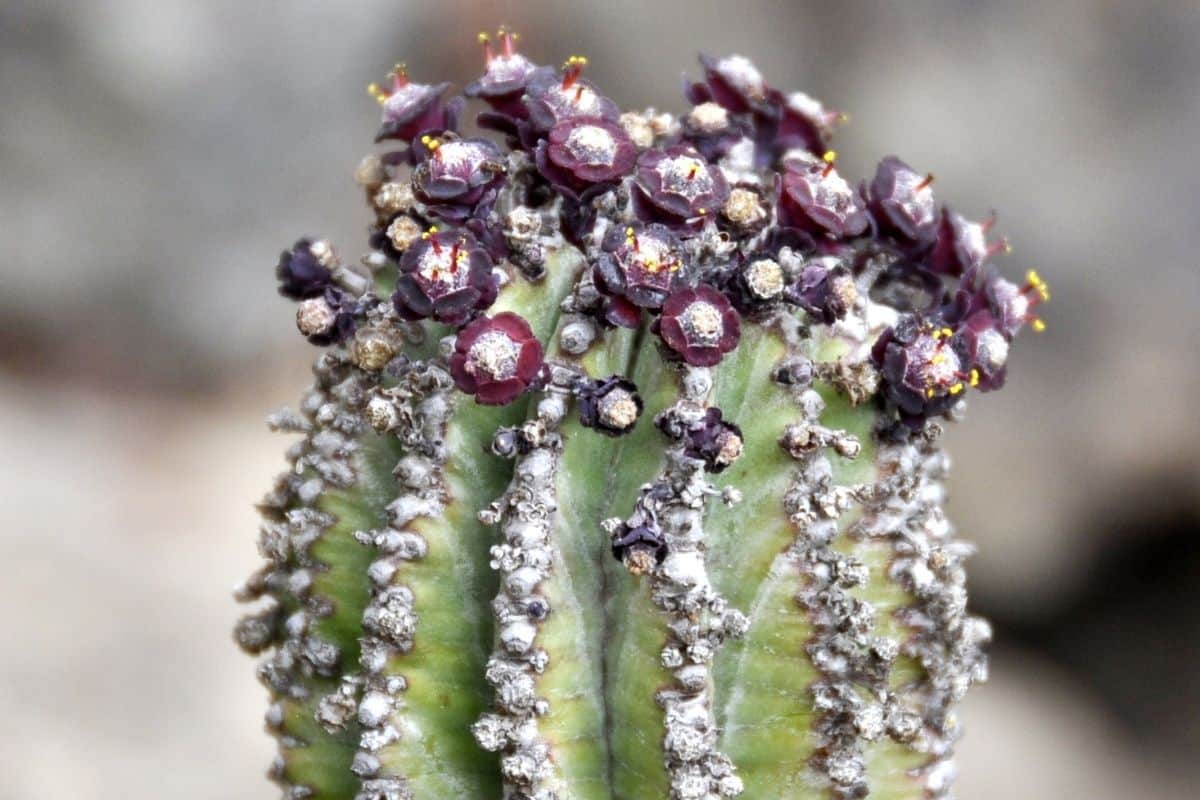
The Euphorbia polygona is indigenous to the Eastern Cape province in South Africa, where it grows prolifically in the wild. The Eastern Cape has a typically mild climate, making it a highly suitable environment for this succulent.
This beautiful-looking succulent is relatively easy to cultivate and is often a favorite among beginners who are just starting out with their hobby of growing succulents. Because it does not require all that much attention, it can safely be left to its own devices and will continue to grow and thrive, as long as it is watered at regular intervals.
Because it has sharp spikes, it needs to be handled with extreme care and can cause harm to people and animals if the spikes penetrate the skin.
The Euphorbia polygona produces a white sap that can be extremely harmful if it comes into contact with the skin. Many people have a severe allergic reaction to it. Therefore it is recommended that you always wear good protective gloves when handling this plant.
Jump to:
Euphorbia Polygona Appearance
| Name: | Euphorbia polygona |
| Soil: | Well-drained soil |
| Blooming: | Spring and Summer |
| Light: | Full sun to partial shade |
| Water: | When the soil is completely dry |
| Propagation: | Cutting, leaves and seeds |
The Euphorbia polygona is an unusual-looking succulent. It has a white stem with a light green tinge. The stems tend to clump around the bottom end, or base, from which the roots emerge.
The stems can be as tall as 5 feet, while the diameter is usually about 4 inches. They are ribbed with deep, brown ribs. They are coated with a powdery white substance that makes them look almost frosted.
As the plant matures, it develops new offsets surrounding its base. These will eventually grow into new stems.
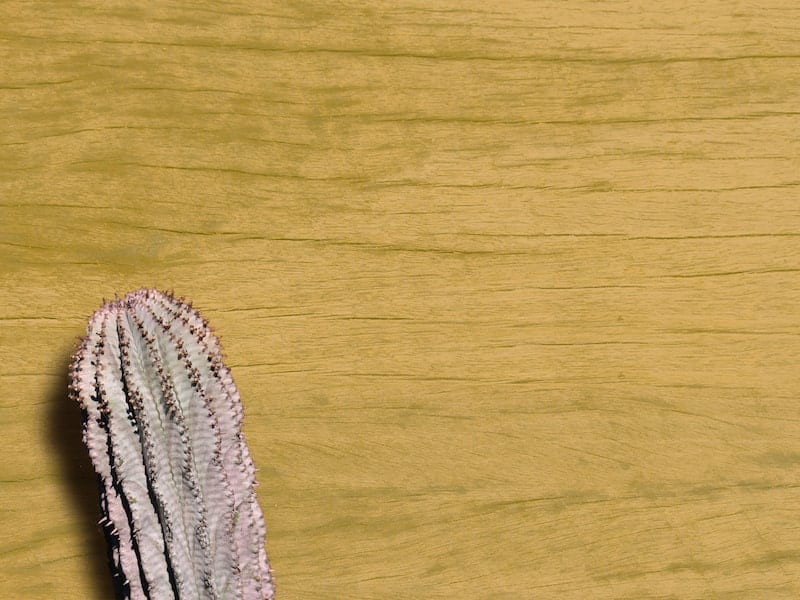
Buy it from:
The stems develop magnificent little flowers in shades of yellow and deep purple. This contrasts beautifully with the stems, which are white.
The fruits are small and spherical in shape and thickly covered in gray hairs. The fruits are only about 0.2 inches in diameter.
Caring for the Euphorbia Polygona
This succulent is a plant that does not require much attention. It will do very well when cultivated by a beginner who is just starting out with his succulent garden. Initially, it will need a little bit of extra care and nurturing to get it going, but, once established as a healthy plant, it can be left to grow without much attention from you.
It usually prefers to be kept in an indoor environment. If you want to keep it outdoors, it is a good idea to plant it in containers, rather than directly in the ground, so that it can still be brought inside when adverse weather conditions prevail and make it necessary.
Light
The Euphorbia polygona is very similar to most other succulents in terms of its light requirements. It needs a lot of light and should be kept in a spot where it will get full sun to partial shade.
No products found.
This plant needs at least 6 hours of direct sunlight per day. If you want to keep it as an indoor plant, place it in a warm room that has a very sunny window. That would usually be a south-facing window if you are in the northern hemisphere. Your plant will be very happy on the windowsill.
If there is not enough natural light, it is recommended to use a grow light to provide adequate lighting. A grow light is an electric light that is designed for growing plants, as it mimics natural sunlight. They are available from many nurseries and garden centers.
Once your Euphorbia polygona is fully grown, you may decide to move it outside. This should be done in a gradual process over a few days, in order to allow the plant to become acclimatized slowly to its new environment. A sudden, drastic change in conditions will cause trauma to the plant, which may damage it.
Water
The Euphorbia polygona is a typical succulent in terms of its water needs. It does not need a lot of water. If it is overwatered, the plant will not do well at all.
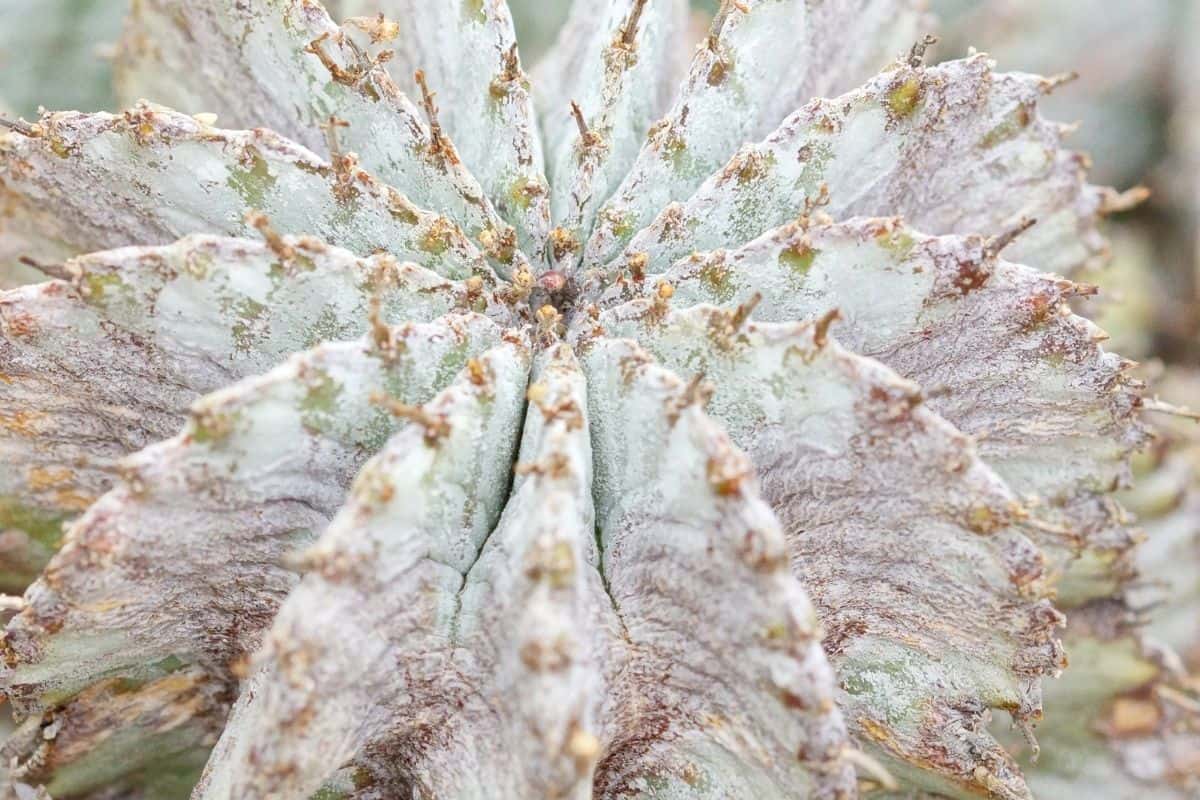
In spring and summer, your Euphorbia polygona needs to be watered only about once a week, possibly even less frequently. The soil and plant should be thoroughly soaked so that the roots are able to absorb a sufficient amount of water.
After watering, the plant should be left to dry out completely, until the soil is totally dry. Only then should it be watered again. To test if it has dried out sufficiently, insert a wooden skewer or kebab stick deep into the soil. It should be completely dry when it is removed.
If the plant is watered too frequently, the roots will remain wet all the time. This will cause them to rot and the plant will die.
In the winter months, your Euphorbia polygona will need very little water, as the plant becomes dormant and very little growth takes place in winter.
Temperature
The Euphorbia polygona is a succulent that is not very hardy and cannot tolerate very cold conditions. This is why it is best to keep it as an indoor plant.
If your Euphorbia polygona is kept outdoors, keep an eye out for weather changes and warnings of overnight frost. If the temperature is expected to drop below 25°-30° Fahrenheit, it will be necessary to bring your plant indoors, otherwise the cold will cause severe damage, possibly even killing the plant.
When kept indoors, choose a warm room with a constant temperature of a minimum of 65°. This will ensure that the plant is not subjected to any sudden changes in temperature.
Soil
Most succulents need soil that has excellent drainage. The Euphorbia polygona is no different. Make sure that your pots have enough holes at the bottom, to allow water to drain off freely.
The soil should be well aerated and should contain at least 50% of a combination of perlit, pumice, and coarse sand, mixed with 50% cactus and succulent potting soil. The mineral grit will ensure adequate drainage.
Read Related Topic: Euphorbia Enopla
Propagating the Euphorbia polygona
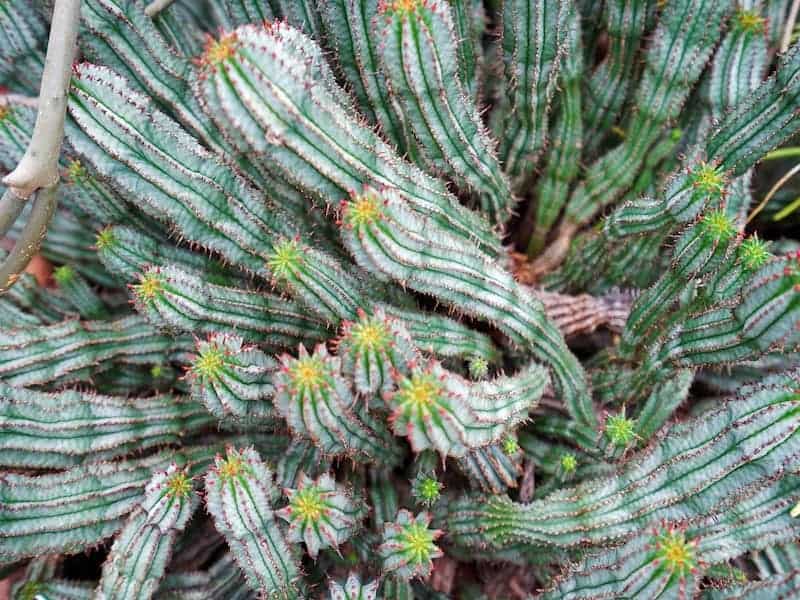
The Euphorbia polygona is not a difficult plant to propagate. It is an easy grower and will do well if propagated under the right conditions.
It can be propagated in numerous different ways. The most effective method is to propagate the plant using cuttings. It can also be propagated with leaves, or occasionally by planting seeds.
Read Related Topic: Suzanne’s Spurge (Euphorbia Suzannae) Succulent Care Guide
Propagating by growing from seed
While it is possible to propagate Euphorbia polygona from seeds, it is not an easy process and is not always successful. It is difficult to get the seeds to germinate. We do not recommend it, as there are easier ways to propagate these succulents, as described below.
Propagating by using cuttings
Propagating your Euphorbia polygona with cuttings is a fairly straightforward process. For the most successful outcome, it should be done at the beginning of summer.
Cut a stem as close to the base as possible, using a clean and very sharp pair of gardening scissors. The stem needs to be left to dry until it has formed a callus, which usually takes 2-3 days.
Once the stem has dried out completely, it is ready to be planted in a pot of cactus potting soil. At this stage, it is beneficial to dip the stem in a rooting hormone. This will help to accelerate growth.
Place the pot in a warm room, and water lightly every few days. Within a few weeks, you should have a viable plant that has developed healthy roots. Continue to care for it as described above, and you will soon have a thriving plant.
Propagating by using leaves
Cut 3 or 4 leaves from the plant, and place them in a pot of good quality potting soil. Water lightly every few days, ensuring that the soil remains damp constantly.
After about a week, the leaves will start to produce shoots, and eventually these little shoots will become the roots of your new plant. You will soon have a viable plant growing from a few leaves.
Common pests and problems
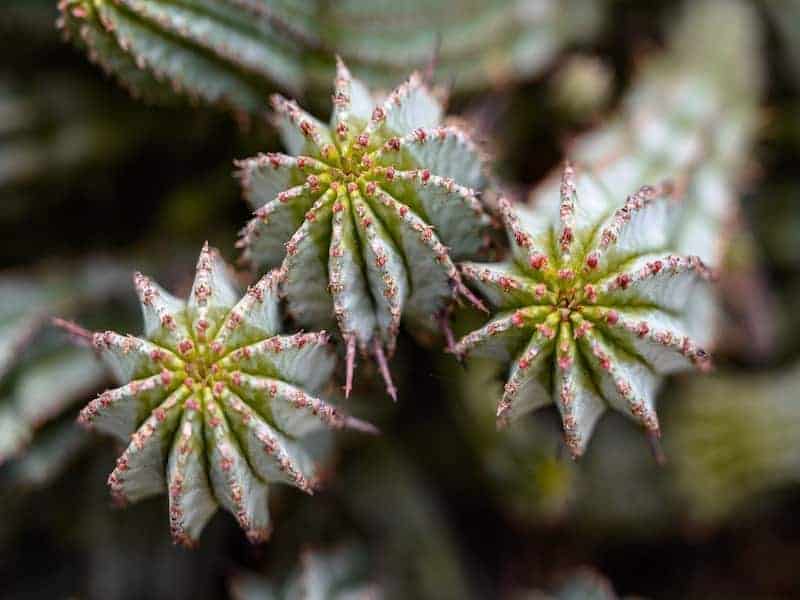
Overwatering
The most common problem with the Euphorbia polygona is overwatering. If you water too much, or too often, the plant will not do well. Succulents generally do not need a lot of water.
It is crucial that the roots are not left to sit in wet soil. This will cause the roots to rot, and the plant will eventually die.
You May Also Like: Euphorbia Lactea Cristata - A Care Guide
Pests and bugs
The Euphorbia polygona can be prone to pest and bug infestations. The bugs to look out for are mealybug and aphids. These are the most harmful and they will devour your plant if left to multiply unchecked.
While no-one wants to use excessive chemical products, sometimes it is unavoidable. Any garden center or nursery will be able to advise you and supply the best pesticide to treat these pests.
Sources:
https://mountaincrestgardens.com/euphorbia-polygona-snowflake-limited/


